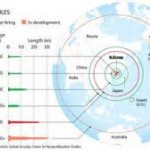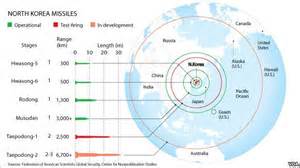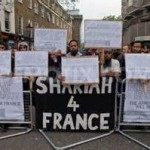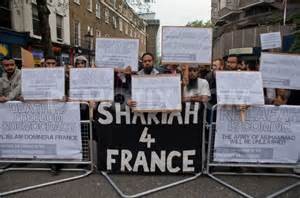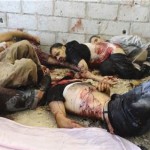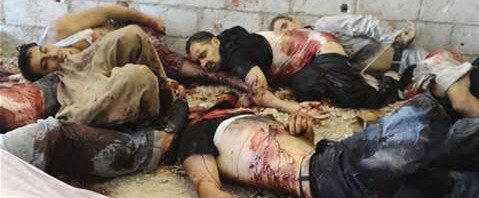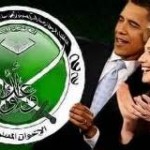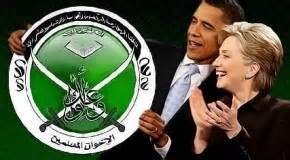It appears that one of the most convoluted processes in Washington DC is the State Department procedure to add to the Terrorism List, FTO (Foreign Terror Organization).
Putting Boko Harem on the FTO took an epic effort to do so after Hillary Clinton refused, even with petitions from those in the intelligence community and from General Carter Ham, commander at AFRICOM. Then, it was not until January 13 of 2013 did John Kerry move to put Ansar al Sharia on the FTO list when more than 20 months ago they attacked both diplomatic posts in Benghazi.
So, what about other terror organizations or rogue nations like Korea? Late in the Bush administration, North Korea was removed from the FTO in an attempt to temper strained talks over DPRK’s nuclear weapons program. It was at that time too, North Korea had a different leader who was not quite as unpredictable as Kim Jung Un is now. That effort by the Bush administration failed, so why no move by Hillary Clinton or John Kerry to add DPRK back to the list? Ah, that is where the convoluted rub and debate begins again.
News of North Korea is dominated right now by Pyongyang’s threats to carry out yet another nuclear test, which would be its fourth since 2006, and its third since President Obama took office. Among the perils, given North Korea’s longtime habit of peddling its weapons to rogue recipients around the globe, is that North Korean nuclear arms could end up in the hands of terrorists. All the more reason, then, to ask why the Obama administration has not put North Korea back on the U.S. blacklist of State Sponsors of Terrorism.
For more than two decades, from 1987-2008, the U.S. — with good reason — listed North Korea as a terror-sponsoring state. That changed in 2008, when the Bush administration, in a desperate attempt to salvage a dissolving 2007 North Korean nuclear freeze deal, offered Pyongyang the gift of taking North Korea off the state terrorism blacklist.
This was part of the Six Party negotiating process with North Korea, which the State Department at the time described as give-and-take: “action for action.” But, as Rep. Ileana Ros-Lehtinen noted in a 2011 congressional hearing, North Korea pocketed the concession and walked away: ”North Korea promised to accept the transparent verification of its denuclearization when it was removed from the list of state sponsors of terrorism by the Bush administration in October of 2008. But Pyongyang reneged on that promise and withdrew from the six-party talks after getting what it wanted.” Since then, Obama has stuck with the Bush folly, failing to restore North Korea to the blacklist.
That may sound like the least of the North Korean outrages that need addressing. But putting Kim Jong Un’s murderous weapons emporium back on the U.S. list of terror-sponsoring states is one of the easiest and least costly moves that Washington could make. Failure to do so not only gives Pyongyang a pass, but sets a terrible example for the current Iran nuclear talks in Vienna. In the Iran case, a senior U.S. administration official has described a nuclear bargaining process similar to the North Korea action-for-action debacle. This time, it is couched as “step by step, in a reciprocal way, matching the actions that Iran commits to take.”
In the State Department’s latest annual roundup of “Country Reports on Terrorism” released April 30, and covering 2013, North Korea was again excused from any state ties to terror. State summarizes the excuse with one blinkered sentence: “The Democratic Peoples Republic of Korea (DPRK) is not known to have sponsored any terrorist acts since the bombing of a Korean Airlines flight in 1987.”
The same State Department report goes on, however, to note that North Korea has yet to resolve the nightmare of Japanese citizens kidnapped by the North Korean government: “The Japanese government continued to seek a full accounting of the fate of 12 Japanese nationals believed to have been abducted by DPRK state entities in the 1970s and 1980s. As of the end of December, 2013, the DPRK had yet to fulfill its commitments to reopen its investigation into the abductions.”
For Washington bureaucrats, this brand of terrorism may seem a distant matter. For the families of those kidnapped, and quite likely for any surviving victims trapped for decades in totalitarian North Korea, it is an act of terror that does not quit. Right now the Obama administration is deploring the kidnapping of Nigerian schoolgirls by members of the terrorist group Boko Haram — and rightly so. State-authored kidnapping by North Korea deserves no lesser outrage. Nor does it warrant any statute of limitations, especially given North Korea’s refusal to fully account for, or render up, its human plunder.
Nor did North Korea confine its abductions to Japan. As recently as 2005, the State Department included a note which has since dropped out of its annual summaries: “There are also credible reports that other nationals were abducted from locations abroad” — including an estimated 485 civilians from South Korea since the 1950-53 Korean War. A 2011 report from the Washington-based Committee for Human Rights in North Korea gave an even more damning account of North Korean abductions, alleging that North Korea’s abductions were more numerous than officially described, and included people of at least 14 different nationalities, kidnapped not only from Japan and South Korea, but from countries such as China, France, Italy, the Netherlands, Malaysia and Thailand. To this list it would be reasonable to add American citizen Kenneth Bae, arrested while touring North Korea in 2012, and sentenced there to 15 years of hard labor.
As for the argument that North Korea is not known to have sponsored any recent terrorist acts, therefore it does not belong on the state terrorism list — this is disingenuous. Yes, it’s been a while since North Korea was caught red-handed carrying out terrorist acts as spectacular as its 1987 inflight bombing of a South Korean airliner over the Andaman Sea — which killed all 115 people on board. But, as a 2010 Congressional Research Service (CRS) report spells out, the criteria which the Secretary of State is expected to consider also include “supplying a terrorist organization with planning, training, logistics , and lethal material support…or providing other types of assistance that could provide material support for the terrorist organization’s activities.”
By that standard, North Korea qualifies as a geyser of terror-linked activity. The State Department currently lists four countries as state sponsors of terrorism: Iran, Syria, Cuba and Sudan. Since North Korea was removed from the terror-sponsoring list in 2008, it has been caught in illicit weapons trafficking with all of the first three — Iran, Syria and Cuba.
A Wiki-leaked secret U.S. government cable dated 2009, and signed by then Secretary of State Hillary Clinton, points to North Korean dealings with the fourth state on the terror-sponsoring list, Sudan. The cable states: “The U.S. government has information that in 2008, Sudan was negotiating a weapons deal with with the North Korean government that included purchasing North Korean medium-range ballistic missiles, short-range missiles, and anti-tank missiles.” The cable goes on to express U.S. concern about “information indicating that Sudanese entities or individuals might be engaging in missile cooperation with North Korea.”
The U.S. government has been sparing in its public release of details regarding North Korean weapons traffic. But more can be gleaned from media dispatches and other accounts, including the annual reports of the United Nations Panel of Experts on North Korea sanctions.
The most recent UN panel report, released this past March, notes that North Korea, in violation of UN sanctions, “has been, and remains actively engaged in trade in arms and related materiel,” and as part of this weapons traffic “also exports services or assistance.” As it happens, many of the recent examples cited in these UN reports involve North Korean dealings with terror-sponsoring states. For instance, this latest UN report lists, among other North Korean infractions, the export in 2012 of missile parts, shipped aboard a Chinese vessel enroute to Syria. The shipment was seized when the vessel made a stop in South Korea.
The same UN report goes into considerable detail about the arms cargo from Cuba, seized by Panama last year aboard a North Korean ship, the Chong Chon Gang. According to the manifest, the ship was carrying sugar. Hidden under the bags of sugar was a weapons stash including ammunition, surface-to-air missile system components, and two disassembled MiG-21 jet fighters, plus an additional 15 MiG-21 engines. Confronted with the evidence, Cuban authorities said the arms were being shipped to North Korea to be repaired and returned.
The 2014 UN report also describes rocket parts, “highly likely” to have been made in North Korea, found in a 500 ton weapons shipment interdicted by the Israeli Navy in 2009 about the vessel Francop, enroute to Syria from from North Korea’s longtime weapons customer, Iran. Earlier UN panel reports, going back to 2010, describe such instances as South Korea’s seizure of a shipment of “protective garments…deemed to have utility for chemical protection,” which had been loaded aboard a container ship enroute to Syria from the North Korean port of Nampo. In 2009, Thai authorities interdicted 35 tons of arms and related materiel, listed as “mechanical parts,” aboard an Ilyushin-76 aircraft coming from North Korea, which had landed at the Bangkok airport to refuel. The illicit cargo included 240 mm rockets, rocket-propelled grenades and man-portable surface-to-air missiles. The consignee was an outfit called Top Energy Institute, in Iran.
The list goes on. Citing dispatches from the French, Israeli and South Korean media, as well as the London-based Arabic newspaper Al-Sharq Al-Awsat, the 2010 CRS report (“North Korea: Back on the Terrorism List?”) summarizes a web of North Korean training, help and weapons provision to the Iranian-backed Lebanon-based terrorist group Hezbollah. The same report goes on to summarize accounts of North Korean ties to the terrorist Tamil Tigers in Sri Lanka, and North Korea’s cozy relationship with Iran’s Islamic Revolutionary Guard Corps, which in turn has a “close relationship” with Hezbollah.

